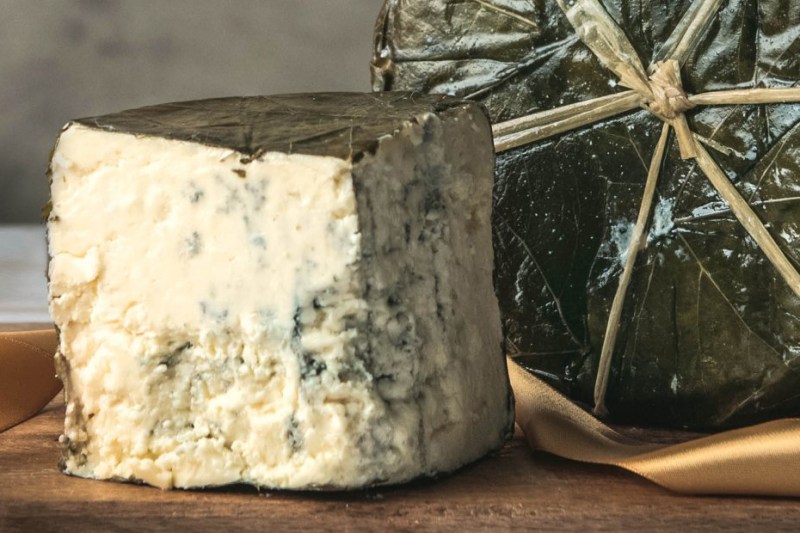Late last month, something unprecedented happened. An American-made cheese was named best cheese on the entire planet. That cheese? The organic Rogue River Blue from Rogue Creamery in southern Oregon.
Keep in mind that this is a competition traditionally dominated by European powerhouses. For generations, the Swiss cave-aged gruyeres, the Italian parmigiano reggianos, and the British cheddars have dominated.
What Rogue pulled off seems like a bit of a coup, but the creamery has been performing exceptionally well for almost two decades. It launched in 1933 and ultimately built a cave system for aging its blues, to mimic the European approach. But in the last fifteen years, especially, the relatively small Oregon operation has won all kinds of acclaim for its dynamic cheeses.
This award, though, is far and away the biggest. The World Cheese Awards commenced in Italy in late October. There, more than 3,000 cheeses from more than 40 countries battled it out. Rogue’s was the only American cheese to qualify for the top 16. The others were all European, save one entry from Japanese producer Nasu nu Mori.
It’s easy to imagine spit-takes and eyes popping out of skulls as a result of such an announcement. And while there was certainly shaken-up feeling in the air, Rogue Creamery is a well-respected outfit. Prior to this year’s competition, Rogue was officially responsible for both the best American cheese and the best blue cheese, per the World Cheese Awards.

The cheese is incredibly unique. It’s organic, made from raw cow’s milk, and includes a natural rind. That rind is protected by Syrah leaves, picked each spring in a nearby vineyard. The leaves are drenched in pear spirits (inspired by the regionally-famous pear brandies at Clear Creek Distillery) before encasing the cheese. Then, the cheese gets the cave treatment for several months.
David Gremmels is the creamery’s CEO. His nickname, unsurprisingly, is Mr. Blue. He helped create the recipe for this cheese back in the early 2000s, alongside the family that previously owned the place. “We wanted to create a real American original,” he says. “It’s a cheese that captures the essence of southern Oregon, in its flavor, presentation, and aromatics.”
His tasting notes are enough to make you find some online and pay top dollar. He describes notes of Himalayan blackberry, milk chocolate, bacon fat, umami, just to name a few. Like any good leader, Mr. Blue credits his whole team and its holistic approach to crafting cheese for the accolade. That includes everybody and everything, from accountants and packaging specialists to the cows that happily graze alongside the nearby Rogue River.
The award-winning cheese from the previous vintage is sold out and futures of the next batch are surely going fast. Because of its decorated past, many of Rogue’s blues are distributed throughout the country and even internationally, to select fine foods retailers and cheese shops.
If you get your paws on some, explore the cheese’s versatility with a wide array of pairings. Because the blues are so involved flavor-wise, the creamery doesn’t really recommend cooking with the stuff. Instead, try it on its own and see how the flavors change as you near the rind or get into the flaky blue veins. The flavors are many, to say the least.
Pairing it with wine is always recommended. Start on the lighter and dryer side with something like a Chardonnay or Sauvignon Blanc. Reds can enhance certain elements of the blue, too, especially varieties like Syrah, Tempranillo, Pinot Noir, and Zinfandel. Then, move into richer territory with a good Port or Madeira. Gremmels suggests American-style dessert wines as well.
“It’s gonna be a discovery for you and I wouldn’t stop at just one taste,” he says.


